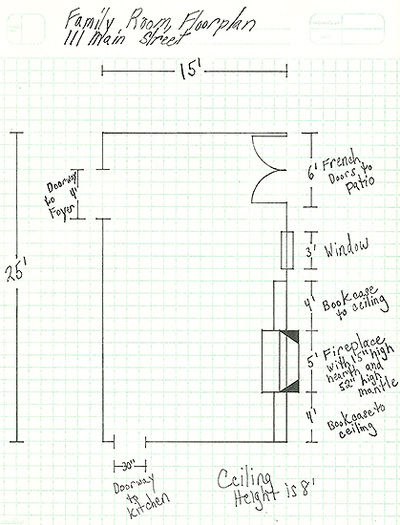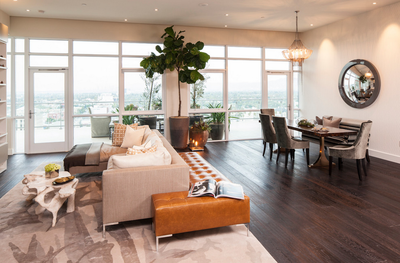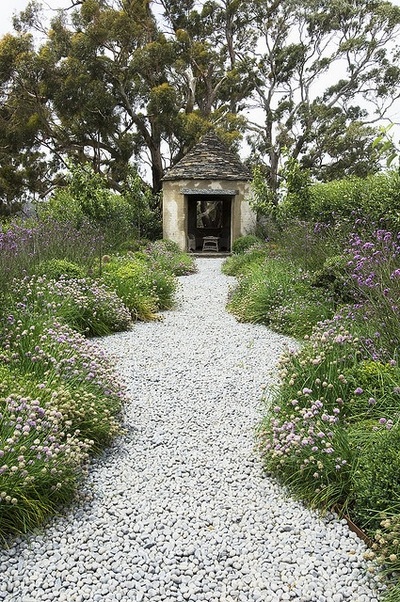 Designer: MuseInteriors; Photographer: John Bessler Designer: MuseInteriors; Photographer: John Bessler Space Planning sounds rather simple at first, throw a sofa there, put the chairs on the side, and coffee table in the middle, right? Of course that's not always quite how it works. Successful planning requires considering a variety of tangibles: physical limitations, size,furniture, flow, and more. Before you start remodel or redesign your space consider the following. 1. Graph it. A great way to carefully plan out your space is measuring your space and using each graph paper square as a foot. Cut out your furniture using the same tools. and place them in your floor plan. Consider the following questions. Can you walk through the space? Can your guests have a conversation without cranking their necks? Is it a comfortable layout? Can multiple people pass through the space at a time? Can you reach the tables from sitting down? And more. When you are done creating your optimal space: make the move, take a seat, and have your family sit down, then ask yourself, "Does this work?" 2. Determining Function. Think carefully about what you want your new room to do and who will be using it. What will be required of this space. Will you be having family movie nights? Hosting parties? Also, consider the ages of those in your household, and if they need space for disabilities. How durable and accessible does everything need to be? Be flexible if you need to, so that your room can grow with your family. 3. Make Your Home Flow. Your new room needs a space that not only flows within itself, but flows with the other rooms in your house. A great way to accomplish this is by using materials and colors similar from room to room. Consider the furniture, millwork, baseboards and interior doors this will allow your home to visually flow. You can accomplish even the biggest room successfully by combining colors, graphing the plan and then laying it out, finally ensuring that the rooms' design is functional. Take a look below at plans and examples on how to design your space.
0 Comments
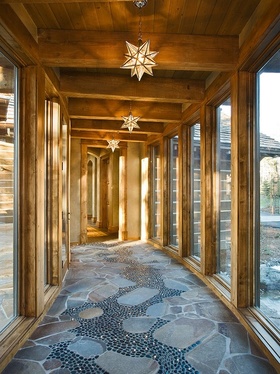 Have you ever walked up to a home and stopped to see what kind of gravel or cement you were stepping on? If so, it’s quite possible the walkway had a great visual appeal that spoke to you. We will call this a Walkway That Talked. Sure, visual appeal is great, but we’d like a little audio with that too. Listed are a few walkways that just might appeal to you. Pea gravel walkways provide a satisfying crunch! Underfoot and are especially at home in country and cottage settings. A solid edging keeps stones from escaping, and landscape cloth underneath keeps weeds under wraps. A landscape contractor will charge about $2 per sq. ft. But you can DIY for half of that! Natural Stone. A flagstone walkway made from quarried stone is unmatched for natural beauty. Local stone is usually attractively priced because it isn’t inflated with shipping costs. So crack open your Geography book... or Google…and learn what types of stone are local in your neighborhood. You can set those beauties about three inches apart and let herbs grow between them. Creeping thyme, oregano, and chamomile are good ground cover options-that release a nice scent when walked on. Or have a ¼ inch grout fill to create a more organized and clean look. Boxwoods and Brick. There is something about the look of white, red and bright green shrubbery that never seems to fade. This combination has been defining walkways for centuries, and looks especially good in traditional settings but both elements need upkeep. Boxwood (Buxus sempervirens) is a tough, glossy-green evergreen that even looks good in winter- trim it often to keep it under control. With time, brick walkways may settle and buckle; pry out individual bricks and reset them by digging them out or adding new sand. Mixing Materials. Combining different elements is a great way to give walkways (and the front of your home) personality. Geometric designs bring you eye immediately downward which overall makes your home even more unique. Plastic and metal edging keeps materials from wandering and make sure the design stays in place. You’ll pay $12 to $26 per sq. ft. for this type of customized walkway, depending on the type of stone you choose and complexity of the design. DIY Spruce UP. Square concrete patio pavers set in sod made a nice walkway but needed a little oomph to add a visual impact, and make maintenance easier! Try setting concrete slabs in groups of squares and rectangles about two to four inches apart and filling that space with red lava rock ($4.50 per bag). Solar walkway lights ($3 each) will enhance the look in both day and night, and finally some happy red geraniums complete the new look. Now that you have learned a couple new tricks on creating a dramatic effect with your walkway, feel free to explore. Head down to your nearest Home Improvement store! Your design is only limited to your imagination. 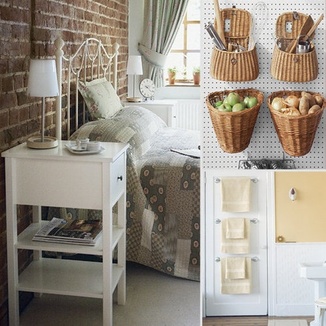 A few days ago I found myself thinking, “Placement is everything!” Why? As a temporary Barista, I had accidentally burnt my hand with 250-degree water. I will admit that I am a clumsy individual, but never have I caused a serious injury to myself. I had traded shifts with another employee who decided to move the banana basket under the water, and there appeared to be enough room for my cup. However, upon taking my full cup of water out for my customer the banana stem had caught the bottom of the cup, causing the hot water to spill over a good chunk of my hand. Now I don’t blame my co-worker. In fact, I blame the previous Architect or Interior Designer, who had built that “Coffee Shop” as a gift shop, and that’s it. The space was not designed to hold multiple machines, water lines and excessive amounts of coffee. If they had previously thought about making the space a coffee shop, then this individual simply had not thought things through. So today, we will talk about the importance of placement, for all objects. Everything in your home should have a designated place. Your “junk drawer” that we all have lingering near our office or kitchen; should only be ONE drawer. Even then, you should have a pretty confident idea on what lives in that disorganized drawer. Need help understanding how things work in your home? Take one day, just one to carry with you a small note pad. Every time you leave one room- write down what you used. In a separate column make notes on how easy it was to access. By doing this, you will not only recognize all of the unnecessary “needs” you have lingering in your cupboards, but you will find a better way to organize your rooms. Here are a few examples: KIDS. If you have children, you might be on the verge of finding it to be impossible on getting them to clean up. Now in order to get them to clean up, you too must show them that cleaning can be easy…because it can! Use colorful baskets for toys, clothes, shoes, and more. If they are old enough, take them shopping with you. A child will always respect an object more if they felt like they purchased it. Finally, when you have set aside areas for these lovely bins or baskets, create times of the day to clean their spaces. Whether you teach them that after each time they go play in a room, or after every meal. Make a game out of cleaning it up (maybe the ground is lava, and you don’t want the toys to melt!). Finally, Understand that your kids listen and watch you, all the time. If they hear you complaining about cleaning, they will complain; likewise, if they see that you leave rooms messy, so will they. FOOD. The refrigerator can be your friend and your worst enemy. However, a way to minimize looking into a fridge for more substance is to clean your shelves, use Ziploc baggies with labels, and designate spaces for: Dairy, Veggies, Fruits, Snacks, Sauces, and Meats/ Cheeses. Find a day once a month to clean your shelves. By cleaning simply and yet everyday objects you will find your mind becoming uncluttered itself. BOWLS & TRAYS. Make sure they can stand on uneven surfaces, and make sure they can hold with added weight. A simple way to make sure you don’t purchase an unstable object is by placing the bowl or tray on the store floor and then making sure it can hold the weight of your purse or wallet, without rocking or falling over. After you purchase your beautiful organization helper, place it in a spot where it is either so obvious or so hidden that no one can hit it on accident. SHOES. If you are like my husband, you have an extreme tendency to take off your shoes as you close the front door, and if you’re like me you get a little ticked that seven pairs of shoes are piled up next to the first place every stranger and friend walks in. You want to make a good impression, but you also want those shoes hidden! To solve this simple dilemma acquire a bench or tiered rack, place large baskets, tubs, or matts in the necessary slots where shoes can remain hidden and yet ready to access as you prepare your daily adventure. MAKEUP. I personally don’t like to publically display how vain I can be, so my makeup is in a drawer. If yours is too, and you have trouble separating your hair from your foundation listen up! Next time you order something online-keep that cardboard box! Or parts of it. Use the flaps to cut out dividers for the necessary sections of makeup world: your go-to brush in the bottom, foundation and powder in the top left…etc. etc. OFFICE SPACE. At work or at home, you can be certain that one day the papers will suddenly form their own skyscraper. A great way to minimize this is with simple Walmart filing bins or any wire paper tray. They don’t have to be by category or even make sense, but the simple fact that you have something in a compact and organized-like stack will make you look like a pro. Now that you have a few tips, go out and explore your home. What do you truly need? What could someone else use more than you do? How do you operate on good days and on terrible days? How do we make your life simpler? You have all these keys, all you need to do is a little soul searching. |
Click to set custom HTML
Archives
January 2019
Categories
All
|

